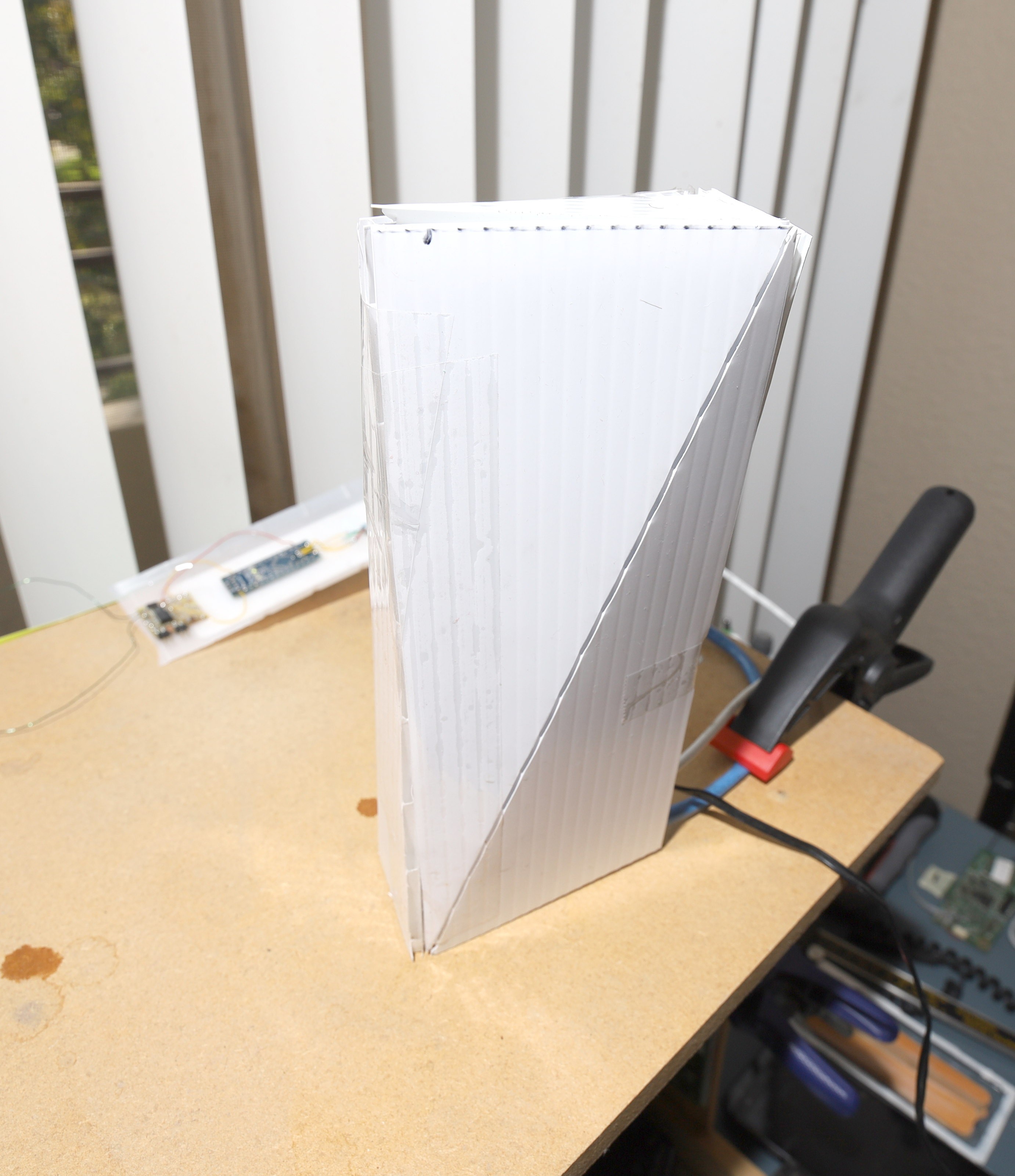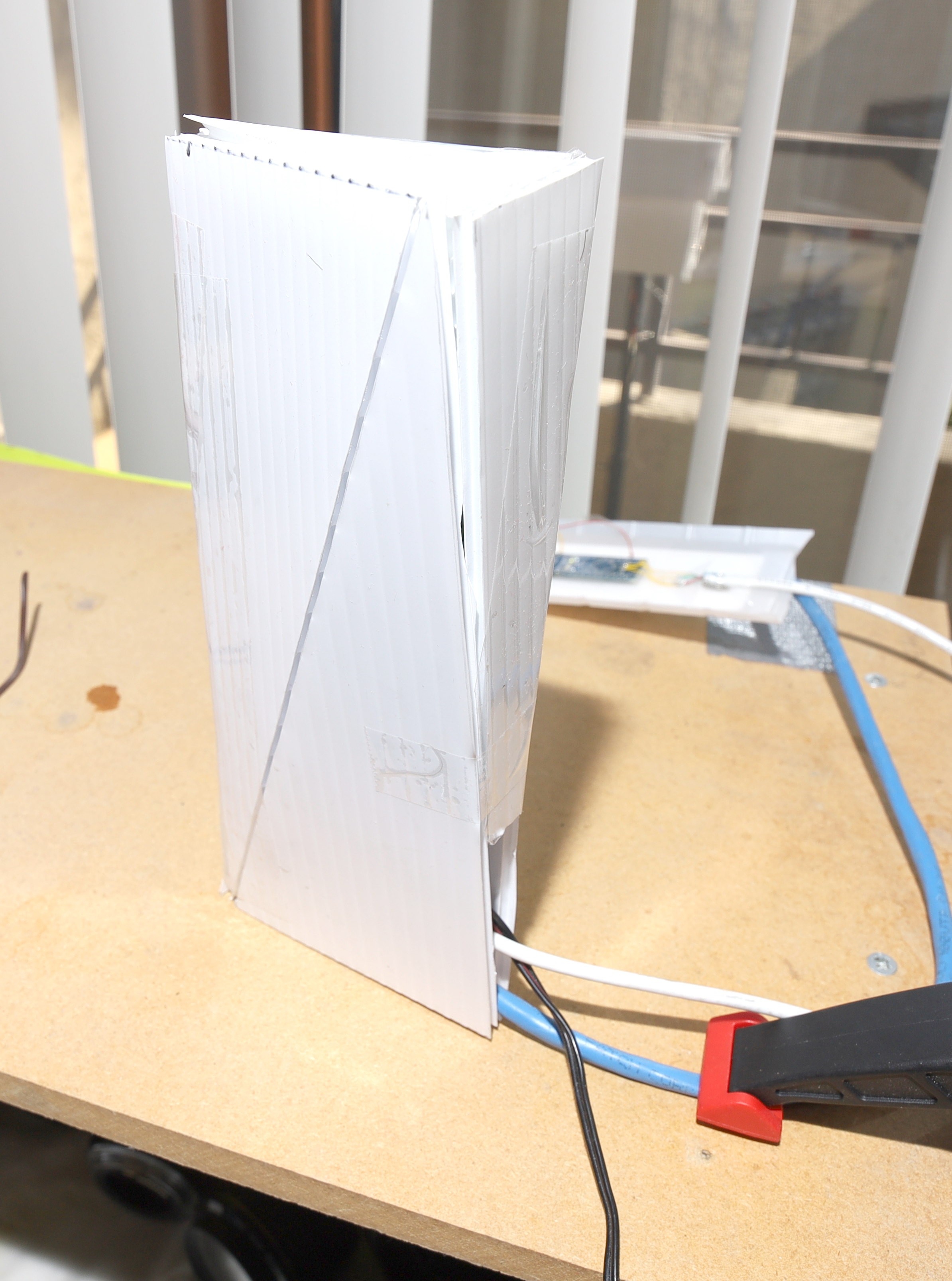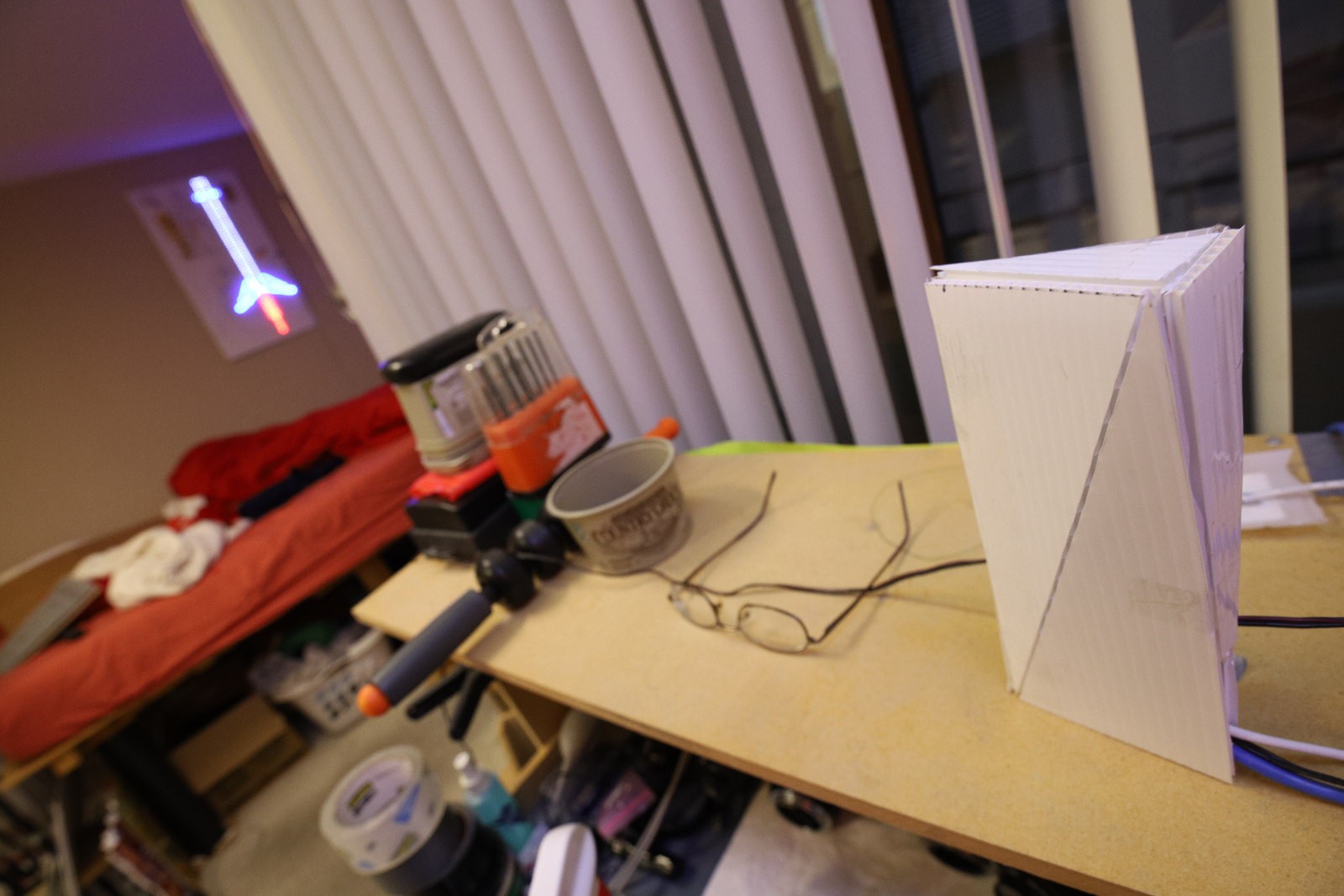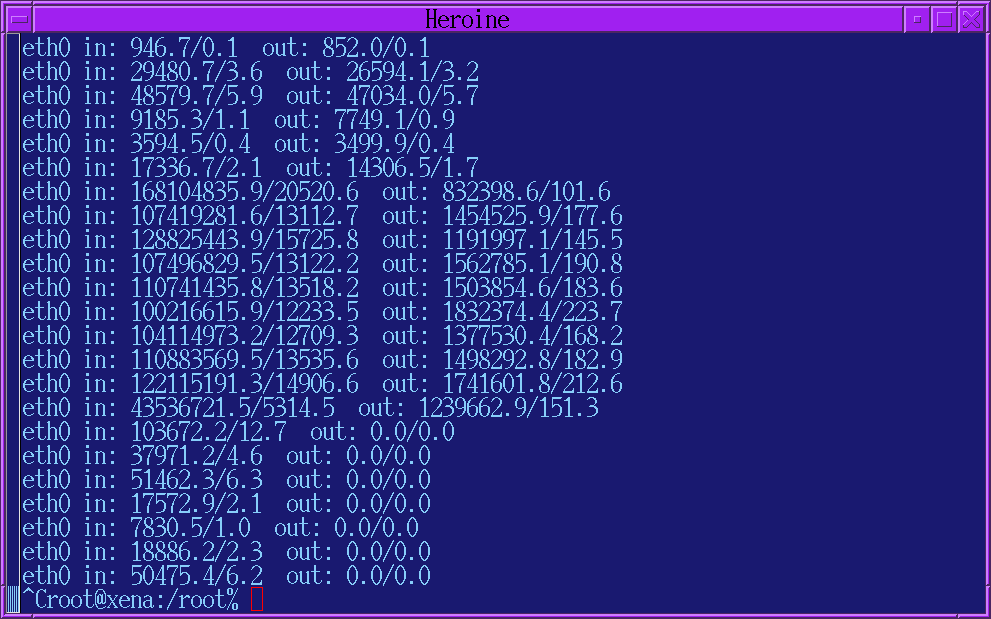When searching for an enclosure for a raspberry pi, the idea came.



It was based on dimensions in the FCC filing & the top secret unboxing video that was obliterated.
The cables actually emerge in the same place as shown in the video. It actually solves the problem of elevating the wifi antenna, routing the cables & takes the least space, but it gets quite hot even with the clockspeed limited to 700Mhz & has trouble standing up without a massive counterweight. A 3D printer would make a much better enclosure that looks like the real thing, but by the time lions have a 3D printer, it'll be easier just to get a real Starlink router.

Helas, the raspberry pi gets over 60C in the enclosure, so the lion kingdom has to keep it open. The model B 3+ also crashes when its ethernet is driven at full capacity.

The problem is the transmit buffer in the lan78xx driver locks up. The workaround is to use the traffic shaper https://wiki.gentoo.org/wiki/Traffic_shaping to limit bandwidth. The failure bandwidth is determined by CPU load, so it could still crash if the CPU is maxed out. Another workaround is to use a USB network card.
The PI has never had much quality control. It's always been a toy people try out & throw away or a teaching tool that runs maybe a tower of hanoi problem. If they use it as router, it's way below its capacity. The model B 1.0 never could run full CPU clockspeed without crashing. The zero W was sort of a high point, but it didn't have ethernet & was prone to having its wifi chip break.
 lion mclionhead
lion mclionhead
Discussions
Become a Hackaday.io Member
Create an account to leave a comment. Already have an account? Log In.